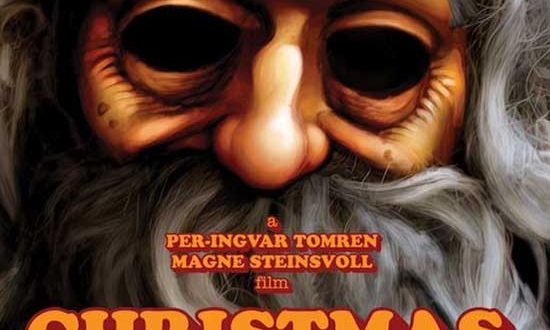Watch Abel Ferrara Interweaves Poetry and War

Table of Contents
“Watch Online Abel Ferrara Interweaves Poetry and War”
“Abel Ferrara Interweaves Poetry and War”
There’s a slim overlap in the Venn diagram of Volodymyr Zelenskyy and Patti Smith. Into that nearly infinitesimal space fits Abel Ferrara’s obliquely reflective, geopolitical documentary “Turn in the Wound.” For that alone it deserves attention, though the Ukrainian president and the American poet/punk rocker aren’t Ferrara’s subjects so much as they are his featured co-authors — fellow painters of a portrait depicting the feeble but essential human instinct to chronicle the horrors of war.
Filled with shocking footage of Russia’s invasion of Ukraine, coupled with first-person recollections of atrocities, Ferrara’s unconventional film heavily features poetic performance art by Smith throughout its runtime. It’s the glue that binds the film, until it no longer can.
Languid despite its brevity, the movie occasionally loses its wider perspective beneath a one-track focus on individual lives. Still, it maintains a magnetic allure for lengthy stretches, thanks to its use of noisy, low-rent digital video in both its recovered archival footage and its newly filmed interviews with Zelenskyy and various Ukrainian soldiers. The project’s chronicling of recent history ends up elevated by Ferrara — who enlists longtime collaborators Sean Price Williams (“The Sweet East”) and Emmanuel Gras (“Makala”) to serve as camera operators — from mere reflection on violent events to digital self-reflection on the way their images transform viewers through sight and sound.
Ferrara’s de facto framing device features Smith, backed by projections of abstract images like shifting landscapes, delivering an impassioned spoken-word performance set to heavy, intoxicating strings. She draws on the poetry of surrealists such as Arthur Rimbaud and René Daumal (a line from the former’s “Memory” lends the film its title), while the cameras in her vicinity record not only Smith, but each other. This device makes the very act of filming this intimate showcase a work of performance in itself.
A similar instinct toward self-reflexivity permeates the movie’s Ukraine-based segments. These take the form of painful, protracted firsthand recollections of bloodshed and desolation, from stories of buildings destroyed by artillery shells, to accounts of mothers and grandmothers forced to step up from behind the confines of femininity and social expectation. The lo-fi video approach to these interviews, which lack finesse and careful lighting setups, not only imbues with a sense of danger and immediacy, but draws the eye to digital artifacts. It’s worth watching on the big screen to catch these uncanny details.
There’s a sense of impromptu fluidity to the film, made tangible and traceable through this sort of low-light pixelation and digital noise. The artifice is exposed early on, as these interviews, filmed against backdrops of rubble, are briefly interrupted by shots of the filmmaker and his crew, a small group of witnesses standing in a war zone with little more than a flimsy microphone and tiny cameras (including a cell phone at one point). In the age of 4K handheld devices and DIY cinema, this lack of finesse speaks to a sense of intense reality.
Much of this footage is aesthetically indistinguishable from the shaky digital zoom of some of the recovered bodycam and helmet footage the movie employs, whether distant shots of Russian helicopters being fired upon by shoulder-mounted bazookas, or of ground troops taking on Russian tanks. Both the unfurling of war itself and its aftermath (as seen in the talking-head segments) are bound by their texture.
Equally horrifying are the painfully lengthy interviews with witnesses, victims and combatants, often translated by an interpreter whose voice shakes as she relays the terrors they’ve seen. However, Smith’s performance (combined with the film’s affinity for crossfades and drawn-out overlaps between wartime images and her avant-garde projections) functions as a form of interpretation too. The tactic obliges viewers to lean forward and intuit meaning from Smith’s haunting, hypnotic sermons on death as they’re forced to exist in close proximity to actual death and destruction.
However, rather than following through on its thoughtful intensity, Smith’s staging ends up anticlimactic right when it ought to crescendo. She exits the trance-like mode of her performance and takes us with her into something more mundane, as though she had built an escape hatch to her immersion. While this may have felt permissible in any other context, its presentation alongside the movie’s Ukrainian subjects — who have no such option to escape their circumstances — verges on betrayal, and momentarily renders her commentary futile. This sudden noninvolvement goes hand-in-hand with the movie’s thesis, which flirts with the idea that when it comes to telling other people’s most painful stories, artists are mere interlopers to their hellish realities.
That Ferrara doesn’t shy away from capturing these pitfalls suggests a larger and more overarching view of conflict — political and military; ethical and aesthetic — which “Turn in the Wound” attempts to fold into its purview. It doesn’t always succeed, given the breadth of the topics at hand, but it does occasionally distill them into moments that prove either gut-churning or powerfully introspective.
If you liked the article, do not forget to share it with your friends. Follow us on Google News too, click on the star and choose us from your favorites.
If you want to read more Like this articles, you can visit our Watch Movies & TV Series category



